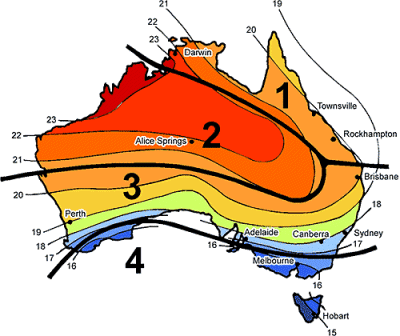Renewable Energy
Renewable Energy Certificates and Solar Rebate Information
The Australian Federal Government supports renewable energy in Australia's through the Renewable Energy Target (RET) scheme. The scheme guarantees a market for renewable energy generation using a mechanism of tradeable REC's (Renewable Energy Certificates).
Government targets have indicated goals of a 20% share of renewable energy in residential and commercial electricity supplies by mix by 2020. This goal is achievable, but it might not be realistic. The expanded RET scheme will absorb state based renewable energy targets into a single scheme, and is to be implemented through amendments to the legislation that underpins the existing policy.
Solar Credit Scheme Facts
Solar Credits are part of the RET scheme - design to help businesses, small organisations and and households install small scale solar systems. The RET scheme does this by by multiplying the number of REC's to be created for eligible installations.
The scheme operates as two separate parts that covers industry and smaller operations (including households). The LRET (or Large-scale Renewable Energy Target) includes projects like commercial solar through to geothermal power stations, while the Small-scale Renewable Energy Scheme (SRES), provides support for small renewable energy systems such as and rooftop solar panels and solar water.
The SRES program relies upon a system of "Credits" (explained in more detail below). Credits apply to the first 1.5 kilowatts of capacity for systems connected to a main grid and up to the first 20 kW of capacity for off-grid systems. Now here's where it all gets a little confusing; the credits work by multiplying the number of certificates (STCs), that these systems would generally be eligible to create under the standard "deeming arrangements". A number of factors come into play here, including the location and installation date of the system.
At June 30, 2011 - the multiplier that applied for eligible system installations was five (refer to the table below). The Solar Credits multiplier reduces over time, which is meant to reflect reductions in technology costs:
While the SRES scheme might sound a little baffling at first - you actually won't need an advanced degree in mathematics to apply. Reputable installers such as Solar Power Australia will generally discount the price of the installation, in return for STC's (although if you really wanted to, you could trying selling STC's on your own, but it's not at all recommended).
As mentioned above, the level of support available under the RET for installations of solar panels (and small‑scale electricity system) depends on the amount of energy the system is likely to generate (based on the location where the system is installed). Solar Credits are more generous in northern parts of the country. For example, the level of support in Darwin is 172 STC's while in Hobart STC's are capped at 133 - see "Why do Solar Credits Vary?" (below).
Am I eligible for Solar Credits?
Generally you will be eligible if you meet the following requirements:
- The system must have been installed no more than 12 months prior to the application
- The system must be an eligible 'small generation unit';
- a solar PV system of up to 100 kilowatts (kW) capacity
- a small wind turbine of up to 10kW capacity
- a micro-hydro system of up to 6.4 kW capacity.
- The system must be installed at an eligible premises (a house, small business, etc).
- The system must be a new (and complete)
- No more than one system at an eligible premises can apply for Solar Credits.
- Solar Credits may only be created once for a particular installation
Why do Solar Credits Vary?
The number of Solar Credits (STC's) created for a system will depend on the amount of renewable energy the system generates. A solar PV system in Adelaide, Brisbane, Newcastle, Sydney, Perth, will create the same number of RECs and will therefore receive the same amount of support. Further south, the same sized system installed in Melbourne or Hobart will receive fewer STCs as these areas have less sunshine so less renewable energy is produced. Refer to the diagram below which contains REC zones in Australia.

